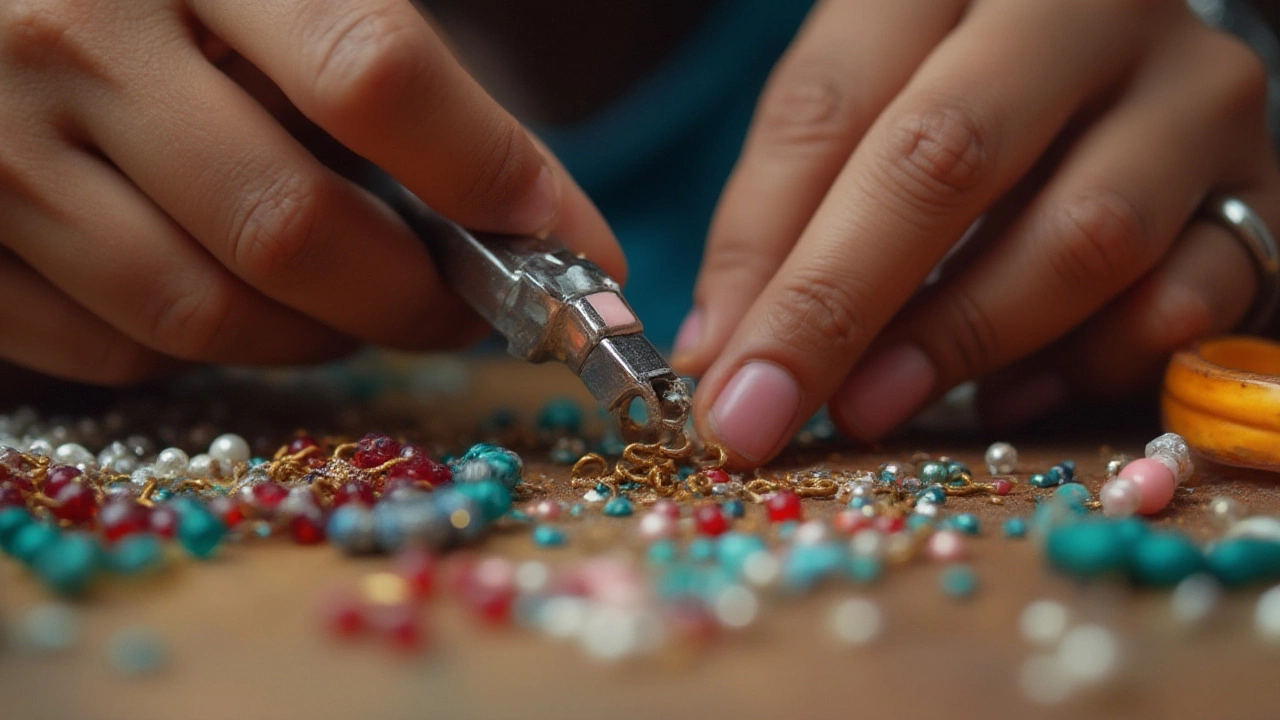Jump Ring Opener: How to Open Jump Rings Quickly and Safely
If you’ve ever struggled with tiny metal circles, you know a good jump ring opener can save a lot of frustration. Whether you’re making a simple necklace or a detailed earring set, the right tool lets you open and close jump rings without marring the metal. In this guide I’ll show you the basics, suggest a few affordable options, and share tips to keep your jewelry looking professional.
Why a Dedicated Jump Ring Opener Beats Pliers
Regular pliers are handy, but they often squeeze the ring and leave a mark. A jump ring opener has a flat, notched tip that slides between the ends of the ring, giving you clean movement. This means the ring stays round, the finish stays shiny, and you avoid weakening the metal. If you’re selling your pieces or just want them to last, the opener is the smarter choice.
Choosing the Right Opener for Your Needs
There are three main styles you’ll see: a single‑blade opener, a double‑blade (like a tiny screwdriver), and a rotary tool with a small tip. The single‑blade is great for beginners because it’s cheap and easy to control. The double‑blade works well for thicker rings and gives extra grip. If you have a lot of work, a rotary model speeds things up, but it costs more. Pick one that feels comfortable in your hand and matches the size of the rings you use most.
Now, let’s walk through the actual process. First, hold the jump ring between your thumb and forefinger, keeping the ends pointing up. Place the tip of the opener at the gap and gently push the ends apart. You only need a tiny amount of pressure – the goal is to create a small opening, not to twist the ring. Once it opens, slip your clasp or component through, then use the same tool to close it. Give the ring a quick twist to make sure the ends meet snugly; you don’t want any wiggle that could let the piece fall apart.
Here are a few common mistakes to watch out for. Don’t use too much force – you’ll bend the ring and ruin the finish. Avoid using the tip on very soft metals like pure copper; a flat‑head screwdriver works better there. And always keep the opener clean; metal shavings can scratch your work. A quick wipe with a soft cloth after each session keeps everything looking sharp.
Finally, maintain your tools. A metal opener can rust if stored in a damp place, so keep it dry and maybe wrap it in a small cloth bag. If you notice the tip getting dull, replace it – a fresh edge makes opening rings effortless. With the right opener and a few simple habits, you’ll breeze through jewelry projects and keep your pieces looking professional.
Ready to upgrade your toolkit? Grab a basic jump ring opener from any craft store or online shop, practice on a few spare rings, and you’ll see the difference immediately. Happy crafting!
Jump Ring Opener: Essential Jewelry Tool for Effortless Design
A jump ring opener makes jewelry crafting quick and easy. Learn how this simple tool can change the way you handle tricky little rings and save your fingers.





